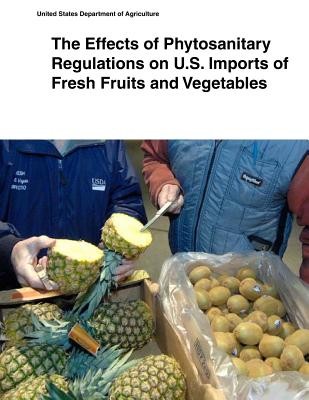
- We will send in 10–14 business days.
- Author: United States Department of Agriculture
- Publisher: CreateSpace Independent Publishing Platform
- Year: 2014
- Pages: 44
- ISBN-10: 1505433355
- ISBN-13: 9781505433357
- Format: 21.6 x 27.9 x 0.3 cm, softcover
- Language: English
- SAVE -10% with code: EXTRA
The Effects of Phytosanitary Regulations on U.S. Imports of Fresh Fruits and Vegetables (e-book) (used book) | bookbook.eu
Reviews
Description
Since the late 1980s, multilateral and bilateral trade agreements have reduced tariff rates and worked to restrain the arbitrary use of nontariff measures, including sanitary and phytosanitary regulations. U.S. imports of fruits and vegetables have risen steadily dur-ing this period as more pathways (specific country-commodity combinations) for legal importation to the United States have gained approval, regulations for gaining import access have been streamlined, and treatment options for phytosanitary issues have been expanded. This report compares 2011 tariff rates with phytosanitary treatments for 29 fruits and vegetables. In general, both tariffs and nontariff phytosanitary measures are relatively small across high-volume import pathways, and there is little evidence to suggest that phytosanitary regulations have a large effect on trade.
EXTRA 10 % discount with code: EXTRA
The promotion ends in 18d.13:21:36
The discount code is valid when purchasing from 10 €. Discounts do not stack.
- Author: United States Department of Agriculture
- Publisher: CreateSpace Independent Publishing Platform
- Year: 2014
- Pages: 44
- ISBN-10: 1505433355
- ISBN-13: 9781505433357
- Format: 21.6 x 27.9 x 0.3 cm, softcover
- Language: English English
Since the late 1980s, multilateral and bilateral trade agreements have reduced tariff rates and worked to restrain the arbitrary use of nontariff measures, including sanitary and phytosanitary regulations. U.S. imports of fruits and vegetables have risen steadily dur-ing this period as more pathways (specific country-commodity combinations) for legal importation to the United States have gained approval, regulations for gaining import access have been streamlined, and treatment options for phytosanitary issues have been expanded. This report compares 2011 tariff rates with phytosanitary treatments for 29 fruits and vegetables. In general, both tariffs and nontariff phytosanitary measures are relatively small across high-volume import pathways, and there is little evidence to suggest that phytosanitary regulations have a large effect on trade.


Reviews